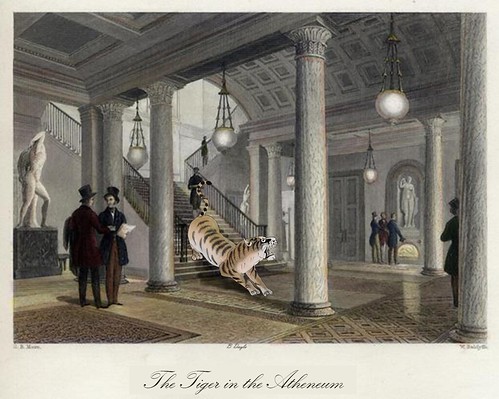 Once upon a time students were taught rhetoric, not just as a means of developing proficiency in oratory, but in order to help them to learn to examine the structure of arguments - and to detect illegitimate ones!
Once upon a time students were taught rhetoric, not just as a means of developing proficiency in oratory, but in order to help them to learn to examine the structure of arguments - and to detect illegitimate ones!
However, it's hard to believe our society could function if the young were to be trained in any form of intellectual self-defence. Who would believe that some new 'essential' gizmo might make them sexy and happy, or that it makes sense to mount a TV that uses as much electricity as a refrigerator on their wall in order to be submerged in anodyne pap and still more gaudy imprecations to spend? Our economy might grind to a halt!
The Advertising and PR industries intrinsically necessary to creating a hyper-consumer culture have, in turn, brought about the final triumph of relativism; your argument is only as a good as your marketing department's budget; and a thing is now generally accepted as functionally 'true' if a sufficient number of people can be brought to believe that it is.
Actual truth is virtually irrelevant - and a belief in its centrality is almost 'quaint', if not 'elitist'! Proof is not the issue: polling is what counts.
The consequences of hyper-consumption and the belief that it raises no intractable problems if most people can be persuaded to think it doesn't are already far-reaching and may well ultimately prove disastrous. But already we can scan the globe in our minds' eye and see localised disasters - or disasters in the making - a-plenty.
the mammalian extinction capital of the world
This virtual review inevitably brings us to South Australia - 'the mammalian extinction capital of the world'(1) - and considering the future of this state brings us in turn to the northern Flinders, to Arkaroola, and to the concept of 'Seeking a Balance'.
'Balance' is a word that, like 'essential', has undergone a radical transformation at the hands of what I'll call PR Revisionism.
Australians are routinely told we can 'balance' the 'needs' of, say, Coorong pelicans and massive cotton consortiums thousands of miles upstream. Of giant timber corporations and some unfortunate small mammal nesting in a tree-hollow in a logging coupe. And we can consider this without once pausing to note the grotesque imbalance, the utter lopsidedness that created the problems in the first place!
The trick works because in this magical world everything and everybody alike - the rich and the poor, the media-savvy and the mute - is now a potential 'stakeholder', and all conflicts are now fair contests between equals on neutral ground, don't'cha know?
This might even be alluring were it not utter nonsense!
tigers in pall mall
 The legacy of British colonialism makes our culture particularly susceptible to this kind of argument.
The legacy of British colonialism makes our culture particularly susceptible to this kind of argument.
Consider the colonial archetype - the 'pukka sahib', trusty Winchester in hand, hunting tigers for 'sport' (with only his wits, several native bearers, and the income from the family estate in Berkshire to support him.) Here, our hypothetical Roger of the Raj would tell us, is 'balance' in the raw - the very stuff of nature; a noble clash between equals! Mano a tigro!
I'd concede this might be strangely 'true' if tigers had any capacity to turn up in Pall Mall clubs and Knightsbridge drawing rooms to inflict grievous damage on these 'sportsmen' in their natural domains!
But clearly - and, dare I say? sadly - this is impossible. The tiger is part of the living natural world; his domain is always what is invaded, what is contested. This is so obvious it's become 'natural', invisible; we're so immersed we cannot even notice it anymore.
But that's hardly where the imbalance and absurdity ends! The tiger is not consulted as to whether, for him, the 'game' - as in 'big game' - is worth the risk. The tiger cannot give consent. Does anyone imagine for a moment that if a tiger had an opportunity to appreciate what was truly happening it would choose to take part in such a 'sporting' contest?
Perhaps for a man-eater there might be some real incentive in the form of a meal - but consider; other prey does not spit bullets - but apart from that our hypothetical big cat would surely think something along the lines of 'My life is put at considerable risk with no gain accruing to me whatsoever. You may kill or maim me at a considerable distance; I cannot hope to do the same to you. You don't even wish to eat me, which, while I might not like it, I could at least respect. Be off with you, bizarre, violent and inedible creature!'
no wallabies in the air-conditioning ducts
So, let's return our focus elsewhere in what was once the Empire on which the sun hadn't the temerity to set.
There sits the nature of Arkaroola 'waiting' - which, of course, it never does, but we can anticipate on its behalf - for culture, in the form of diamond drills, 'dozers and giant declines, to invade it. Oh, there's been a few scouting parties in the past - and some persistent trouble with browsing exotic ungulates - but this is the 'real deal', the 'big one'.
This is a strictly one-way transaction, the reverse - as in our absurd tiger in Pall Mall - simply cannot occur. No mining company or state bureaucracy need fear; Yellow-footed Rock Wallabies will not lay retaliatory claim to their city offices or attempt to seek shelter in their air-conditioning ducts!
No, as is only proper, the dozers will burst in on a nature minding its own business, and because we are 'civilised' a few concessions will properly be wrung out on its behalf. Invading and not invading are now equivalent acts - the invasion may well do enduring harm to the landscape, but we must consider an 'equal' harm that might befall shareholders should it not take place!
'Balance' has been achieved! The aggressor has vanished! History has vanished! Context has vanished! Even Nature's intrinsic title to its own territory has gone; what was once a self-sustaining landscape is now magically transformed into a 'level playing field', populated by 'stakeholders'. Conflicts have been replaced by negotiations leading to 'compromises'.
Compromise - Balance's best friend: this is where we return to the realm of rhetoric. (And thanks must go here to the learned Mike B for his contributions!)
2+2=5, and we have the numbers to prove it!
In his (now out-of-print) 'Straight and Crooked Thinking' British logician RH Thouless describes, as one of the '38 dishonest tricks' he identifies as being frequently used in order to win arguments, the logical fallacy of "the recommendation of a position because it is the mean between two extremes."
And one of the relatively few things that Neoliberal academic Dr. Madsen Pirie and I would agree on is that "Where one view is correct, there is no rule that it will be found by taking the average or mean of all views expressed."(2)
To take an absurd, but easily-grasped example: 'I believe 2+2=4 while my neighbour believes the sum to be 6. We have achieved a reasonable compromise and now concur that the result is 5.'
Pirie believes this flaw is distinctively British.
"[It] appeals to that upper class English feeling that any kind of enthusiasm is a mark of bad manners or bad breeding. One shouldn't be too keen. It helps to explain why none of them are particularly good at anything, and accounts for their steady, but moderate, decline."(3)
Sadly, I think Pirie has underestimated the extent to which the continual praising of a 'middle ground' that lies between the 'extremes' has become a mainstay of the 'reasonable' mass-media - and even talkback's more egregious ratbaggeries!
This notion has, in turn, colonised the minds of much of the population who see themselves as 'middle class' - a great many people, including much of what is actually the working class - throughout the domains of the old Empire.
'Everyone' - that is, the amorphous 'everyone' that everyone 'respectable' alludes to - now thinks the truth lies somewhere in the middle. Everything outside of the centre is extreme, and proponents of views that stray far from the centre are 'extremists'.
(In fact, much of Public Relations now consists of identifying the client as occupying precisely this 'neutral territory', whether they be an oil-spilling Petroleum MegaCorporation or a Billionaire Corporate-raider cum would-be President!)
But, as Pirie notes regarding the 'the sum is 4' and 'the sum is 6' camps described above, some 'reasonable' consensus-seeker might be "correct to describe them as extremists, but incorrect to suppose this proves them wrong."(4)
don't drink the Kool-Aid!
The Americans have a wonderful expression of personal independence of thought from contemporary groupthink - evolving from an unassuming beverage's supposed role in that spectacular modern tragedy of cultism; Jonestown's mass 'Revolutionary suicide'(5) -
"I'm not drinking the Kool-Aid on that one."
A commentator might proudly note that he or she, for one, was not 'drinking the Kool-Aid' on Iraq's supposed weapons of mass destruction, for example, or the inherent virtue of the unregulated 'free trade' in financial derivatives we're all currently paying the price for.
In our own small world of troubles I suggest we don't swallow it either.
A balance does not have to be sought. Mining's claim on the Wilderness Sanctuary is not rendered legitimate merely because it is not illegal, some say they stand to make a lot of money out of it, and/or because to date no-one has gotten around to putting land that clearly merits it into a National Park (not that even this would mean the industry couldn't lay claim to it - see the posts immediately below this one!).
We don't have to consent to allowing the mining industry into Arkaroola, and limit ourselves to a set-piece debate on the precise form its intrusion might take, because we're herded into some notion that to do otherwise would be 'unreasonable'; 'unbalanced'.
The most important balance in Arkaroola is what exists there now - the natural balance. This is already sufficiently under seige - historic grazing impacts, feral animals, drought, climate-change - without anyone bringing in the really heavy equipment!
The previous posts have identified the extent to which the mining industry already largely has the run of the state - if it's serious about being 'green' let it retire from this field gracefully!
NOTES
(1)Dr Rob Morrison
http://www.abc.net.au/rn/ockhamsrazor/stories/2004/1032252.htm - many other citations
(2)Madsen Pirie: How to Win Every Argument: the Use and Abuse of Logic. P 158.
http://www.amazon.com/How-Win-Every-Argument-Abuse/dp/0826498949
(3)Pirie: ibid.
(4)Pirie: ibid. Note that even if I believe the answer to be 3 and my neighbour 5 the consensus position is only correct by chance - the result is most certainly not proved by the process, and to believe it is proved is to abandon rationality entirely!
(5)The 'Jonestown Massacre' of the members of the 'People's Temple Argricultural Project' took place in Guyana in 1978 -
http://en.wikipedia.org/wiki/Jonestown
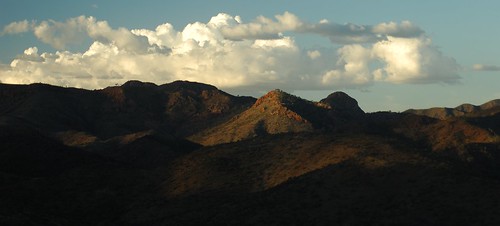



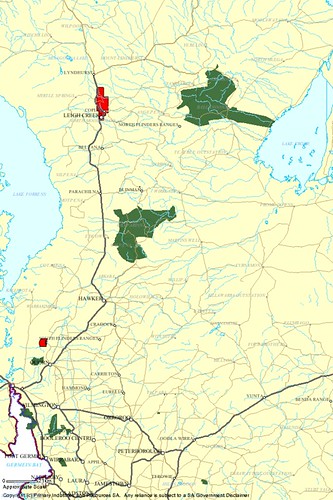
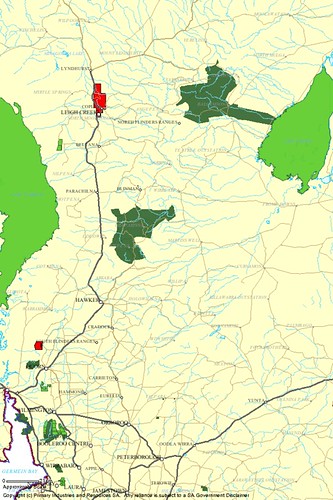
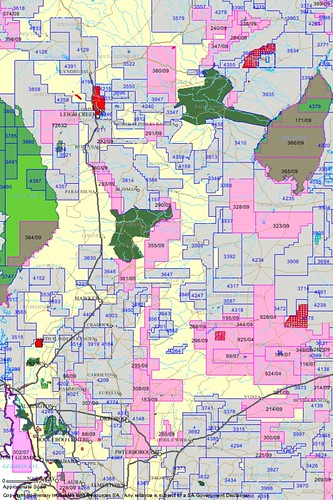
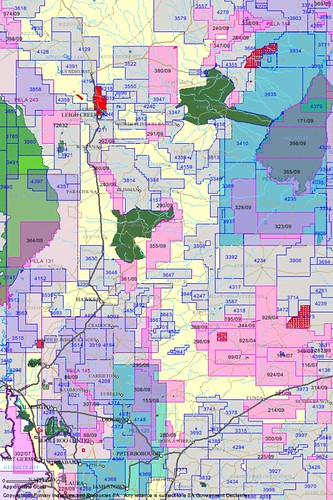
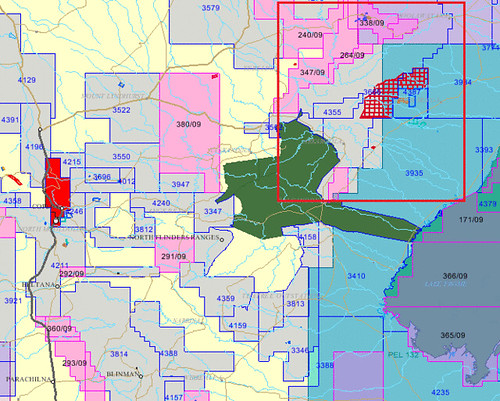
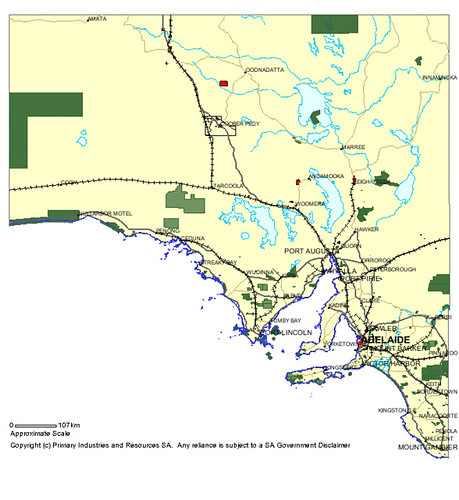
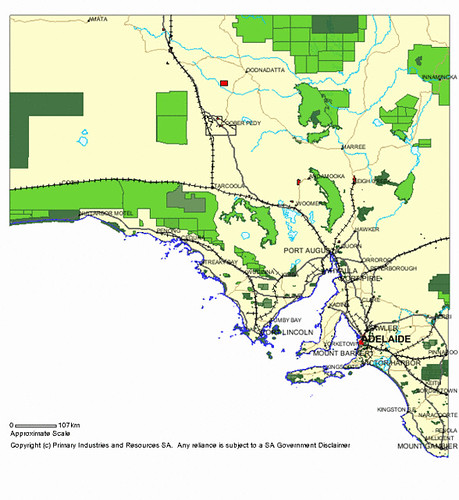
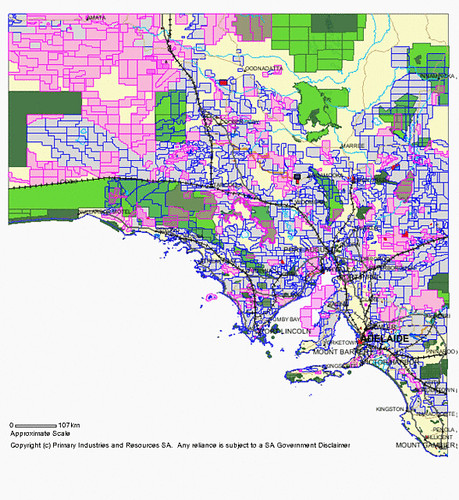

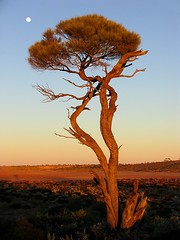
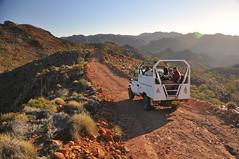
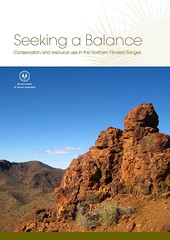
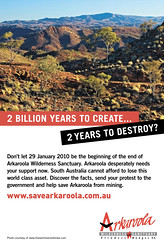
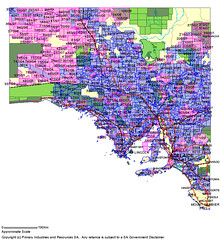
![link to the u[n]sa homepage](http://users.chariot.net.au/~greenh/blog/unknownsa_ublog-text.gif)


![link to the u[n]sa features page](http://users.chariot.net.au/~greenh/blog/features_ublog-text.gif)
![link to the u[n]sa kangaroo island feature image pages](http://farm2.static.flickr.com/1306/1187313059_93fdefd86b_o.jpg)
![link to the u[n]sa katarapko creek / murray river np feature image pages](http://farm2.static.flickr.com/1435/1181073355_b5c45f799d_o.jpg)


!['constellation' - wild country [national] set on flickr](http://farm1.static.flickr.com/155/415123844_3e6da621e5_s.jpg)

!['the bay serene' - the wild west [coast] set on flickr](http://farm1.static.flickr.com/121/312226516_606ac35455_s.jpg)








![u[n]sa journal -thanks for your time! u[n]sa journal - thanks for your time!](http://users.chariot.net.au/~greenh/blog/journal_ublog-text.gif)